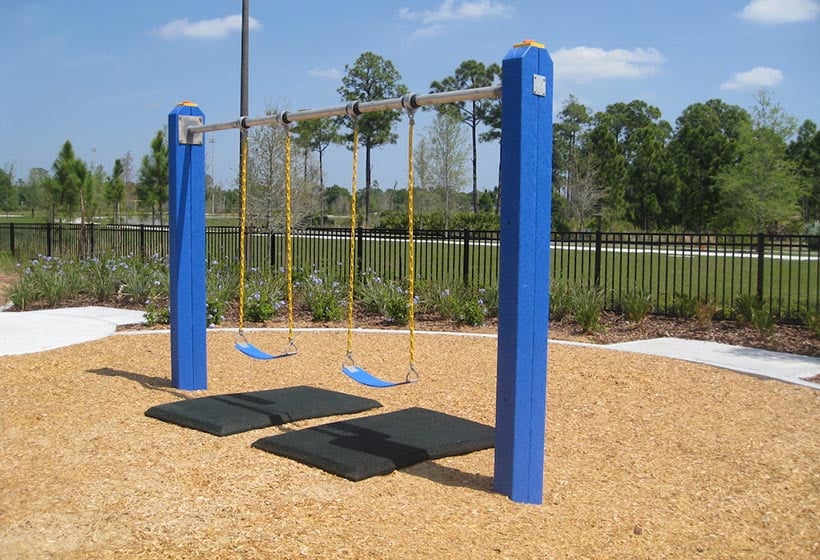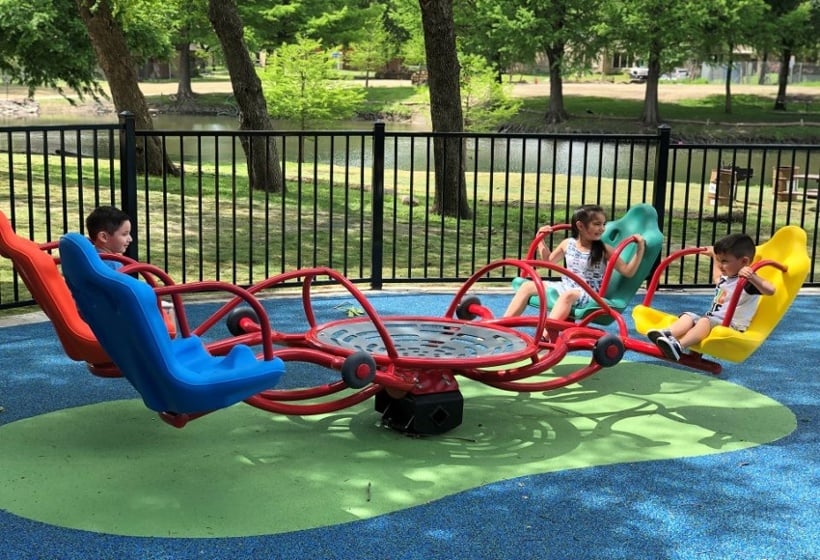The Consumer Product Safety Commission (CPSC) estimates over 200,000 injuries occur every year on public playgrounds. Falls to the playground surface being one of the leading causes of these injuries. Various surfacing options such as loose fill mulch, poured-in-place rubber, and rubber tiles are being used to minimize the severity of these injuries.
ASTM Guidelines have been established for the playgrounds protective surfacing. One of those guidelines is ASTM 1292. ASTM 1292 is the standard specification for impact attenuation of surfacing materials within the use zone of playground equipment. This specifies impact attenuation performance requirements for playground surfaces using a test method which simulates the impact of a child’s head with the surface.
The test method yields the G-Max and Head Injury Criterion (HIC) scores. G-Max is the measurement of the max acceleration produced by an impact. The Head Injury Criterion (HIC) is the measurement of impact severity based on the magnitude and duration of impact accelerations and the risk of head trauma. Guidelines state that the G-Max Value be less than a score of 200 and HIC Value be less than 1,000 for specific fall height. Specific fall height is the vertical distance between a designated play surface and the protective surfacing beneath it.
Below is the Triax System used for Impact Attenuation Testing, the results displayed on the hand-held device and the results downloaded from hand held device for publication.
Based on the output data above, the G-Max (Peak) is less than 200 and the HIC is less than 1,000, which means this surface is within specification.
Even though on-site testing is available, all new surfacing products are sent out for third part testing prior to their release to market. The impact attenuation test is performed at three different surface temperatures. Those temperatures are 21° F (cold), 73° F (ambient) and 120° F (hot). The product must pass all three temperatures in order to be released to market.
Other test also performed in conjunction with the surface attenuation are:
- ADA Accessibility
- Flammability
- Freeze Thaw
- Coefficient of Friction
- Abrasion Resistance
- Tensile Strength
What happens once the product is released to market? Owners can request an on site test to verify the surfacing is compliant with the guidelines set forth. As part of Rubber Designs Quality Control, random impact test are performed every shift to ensure the safety of all manufactured goods.



-1.jpg)